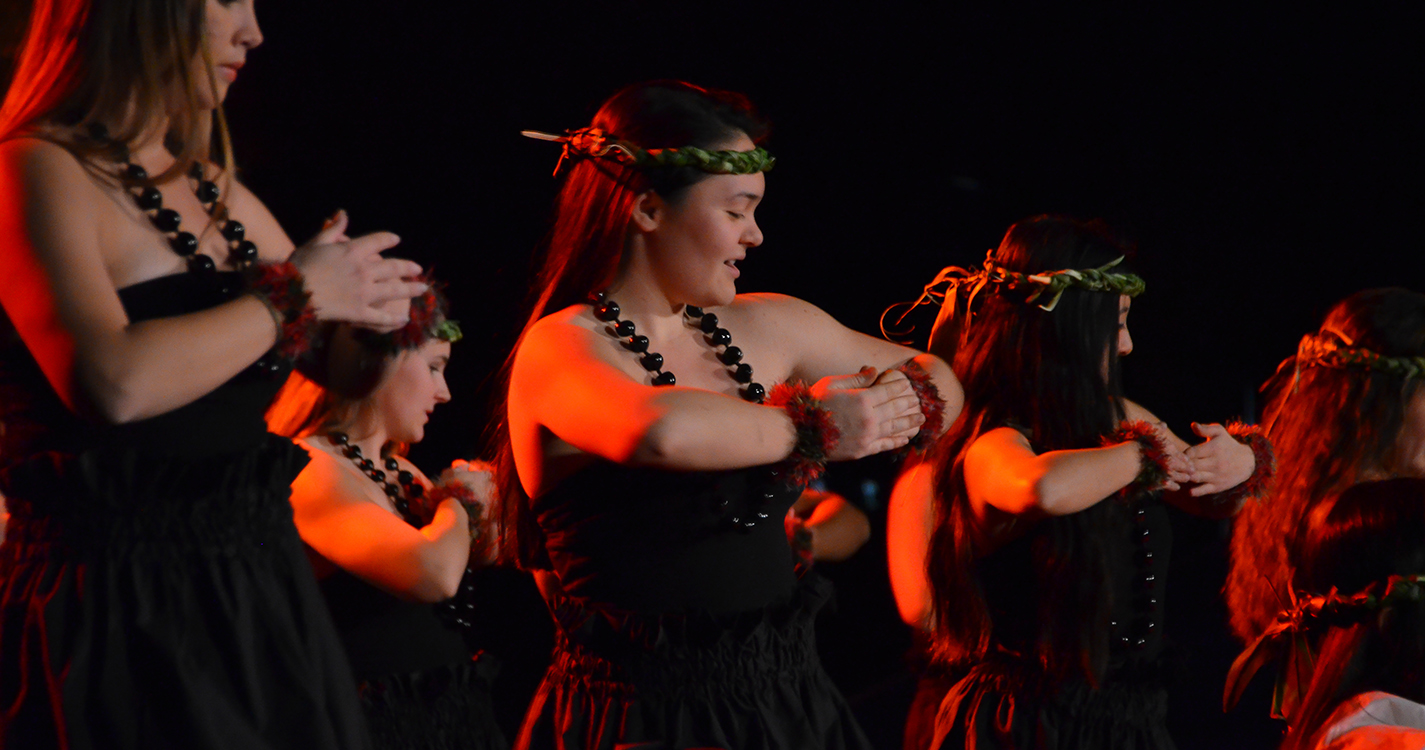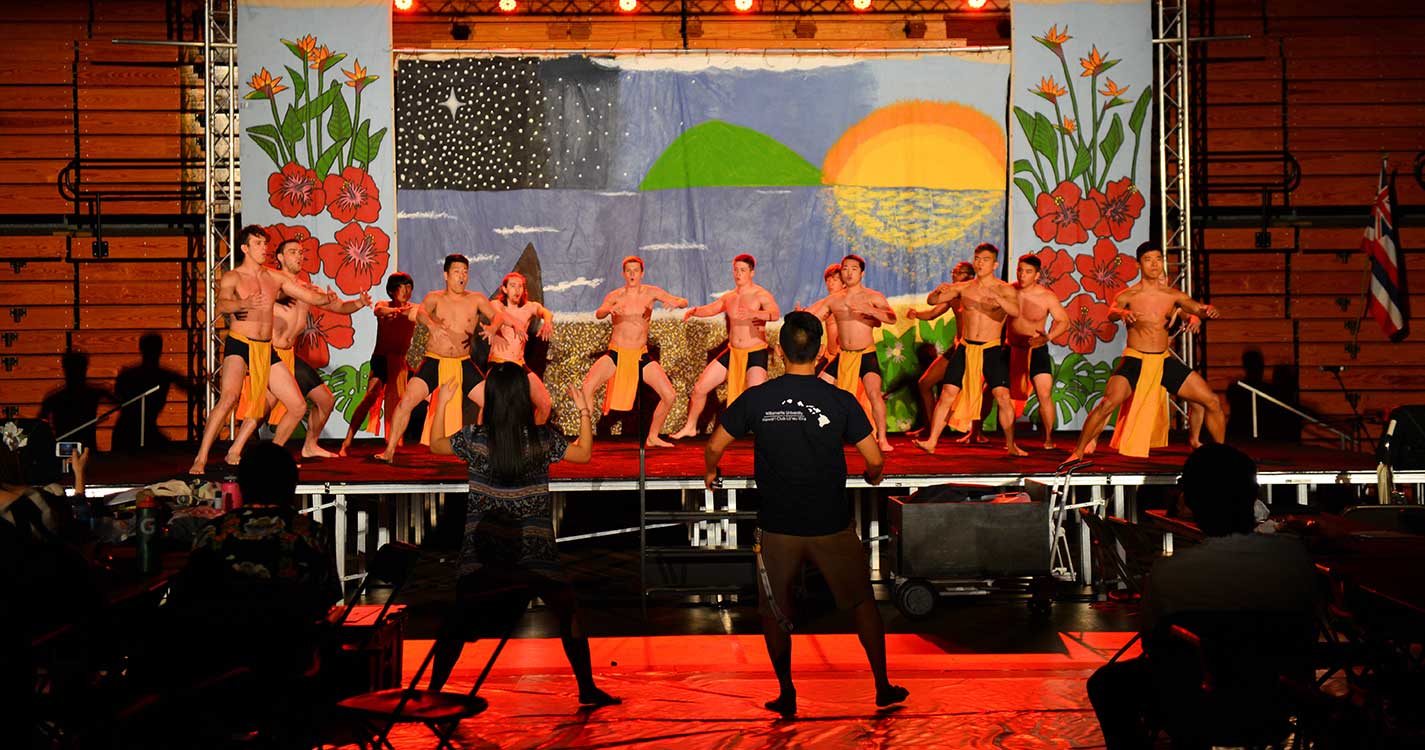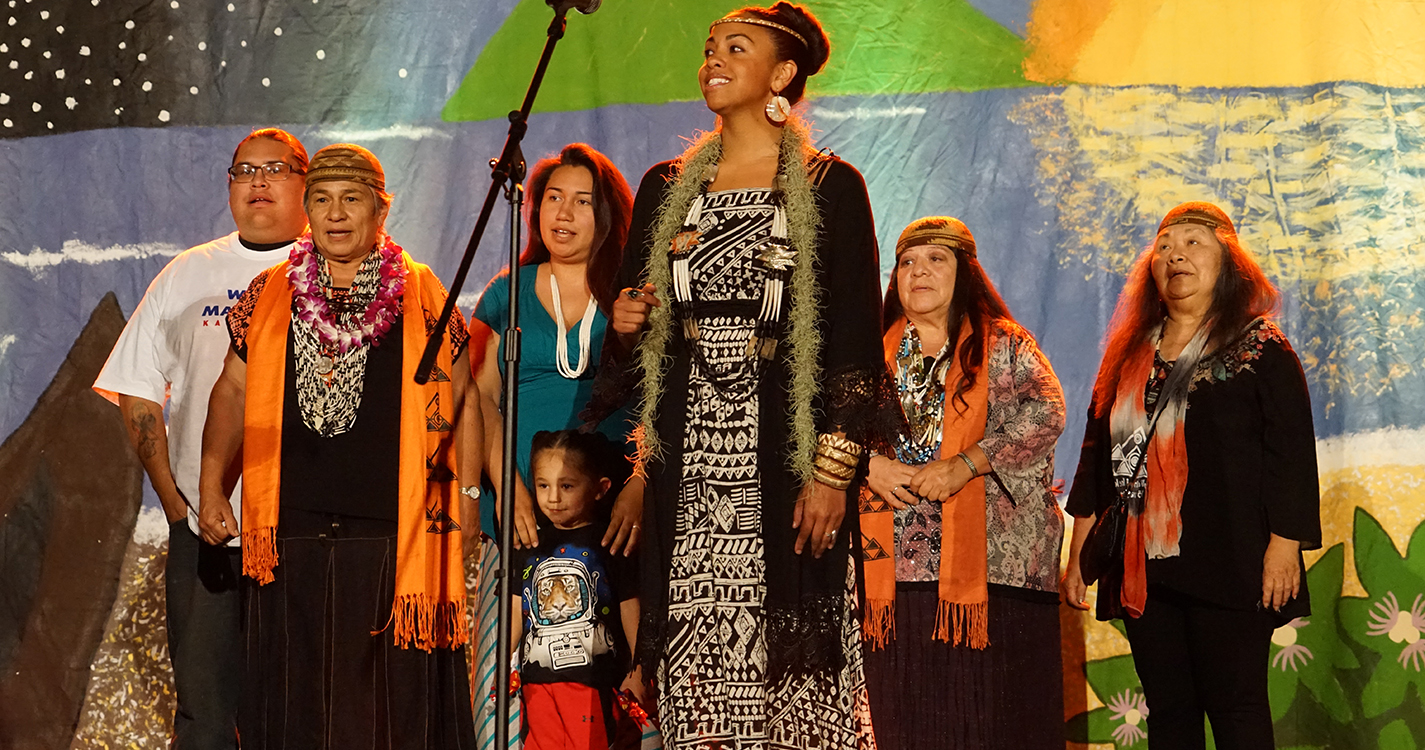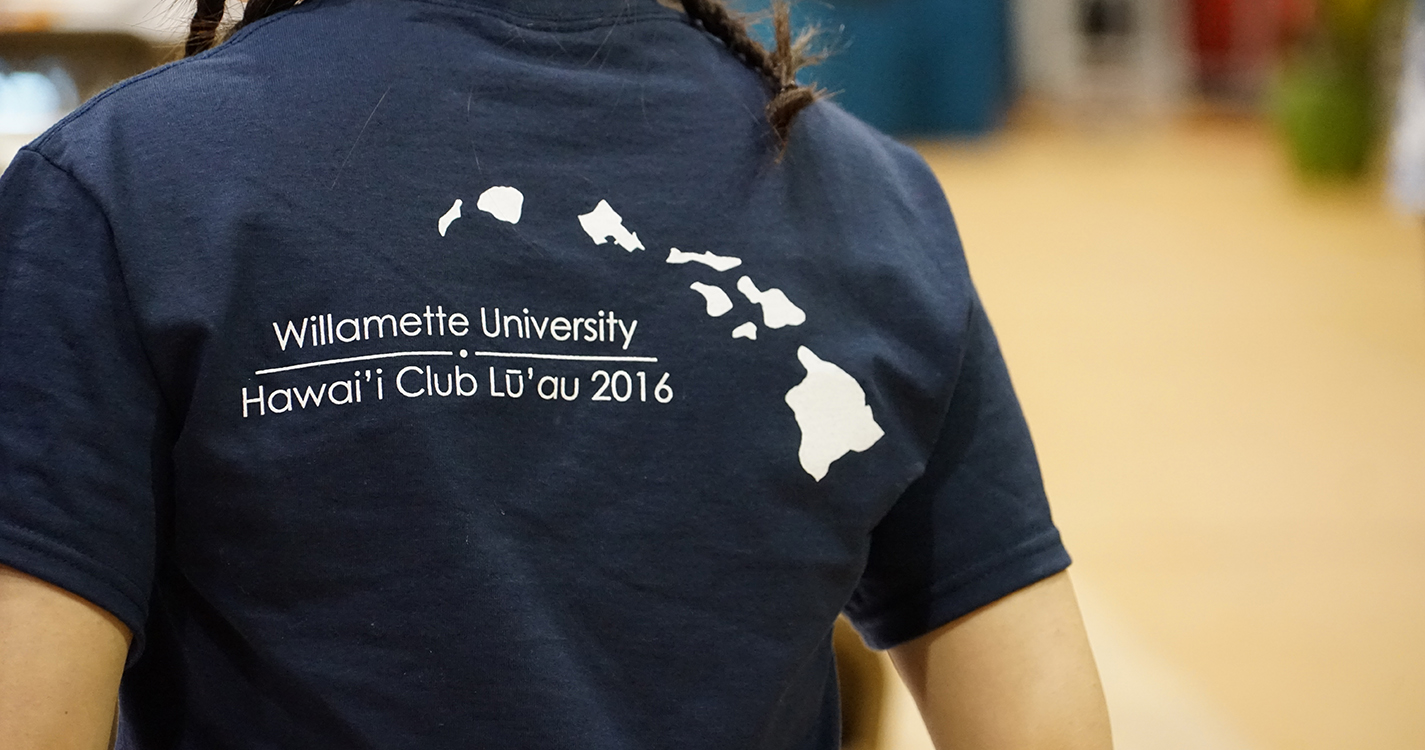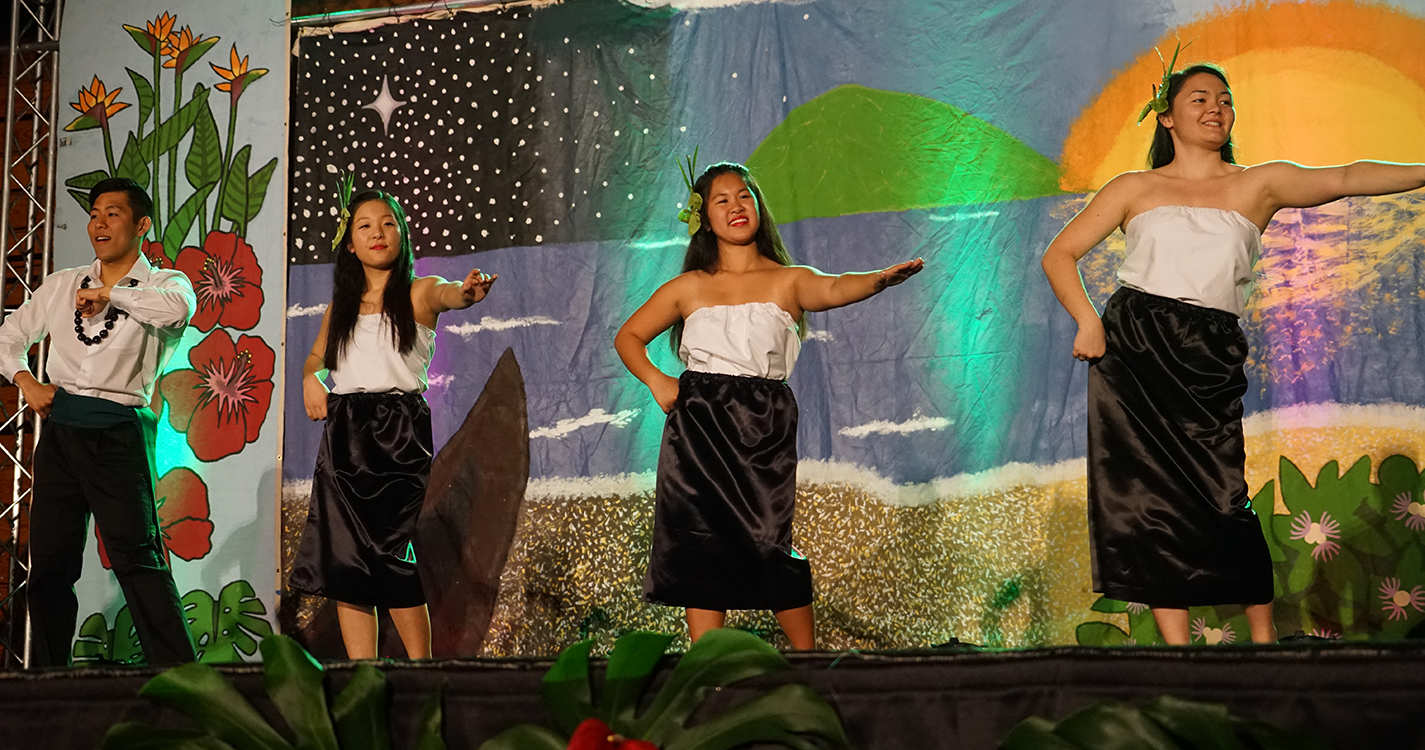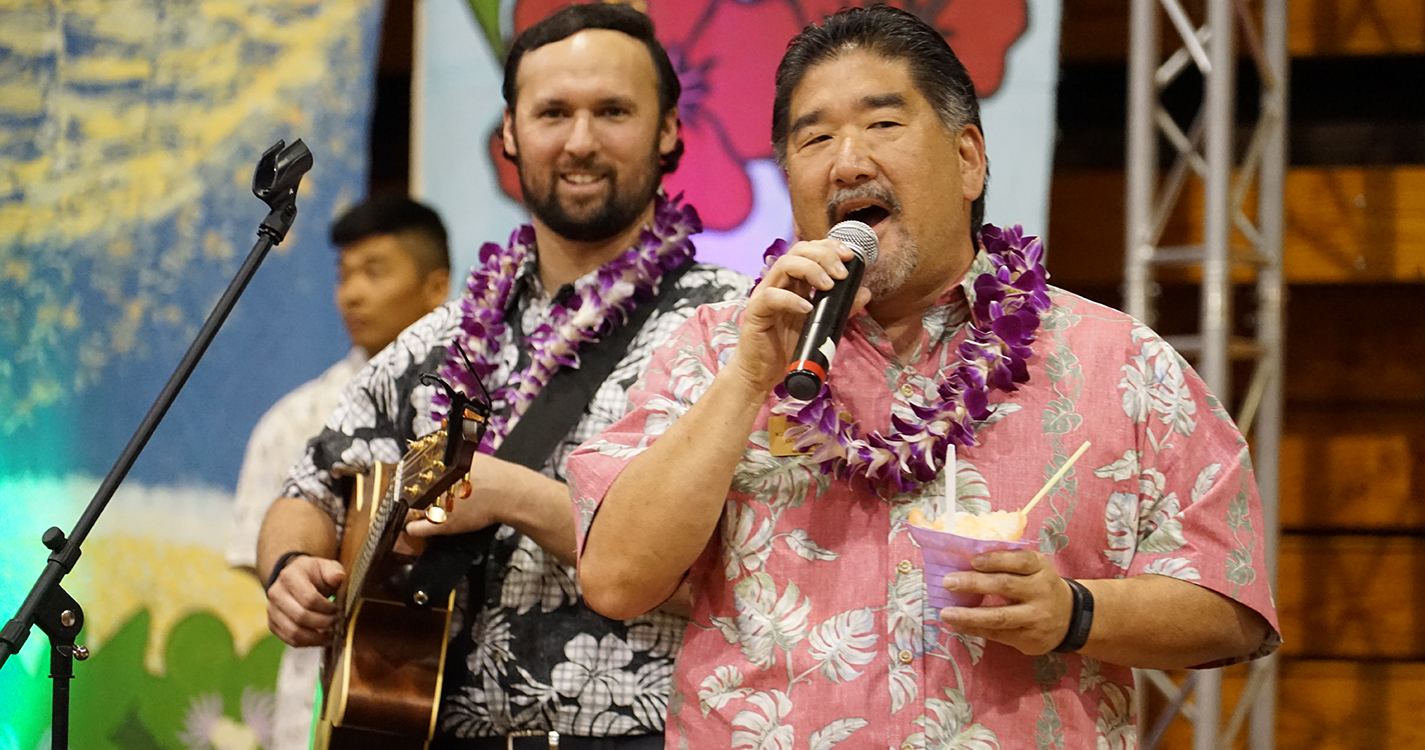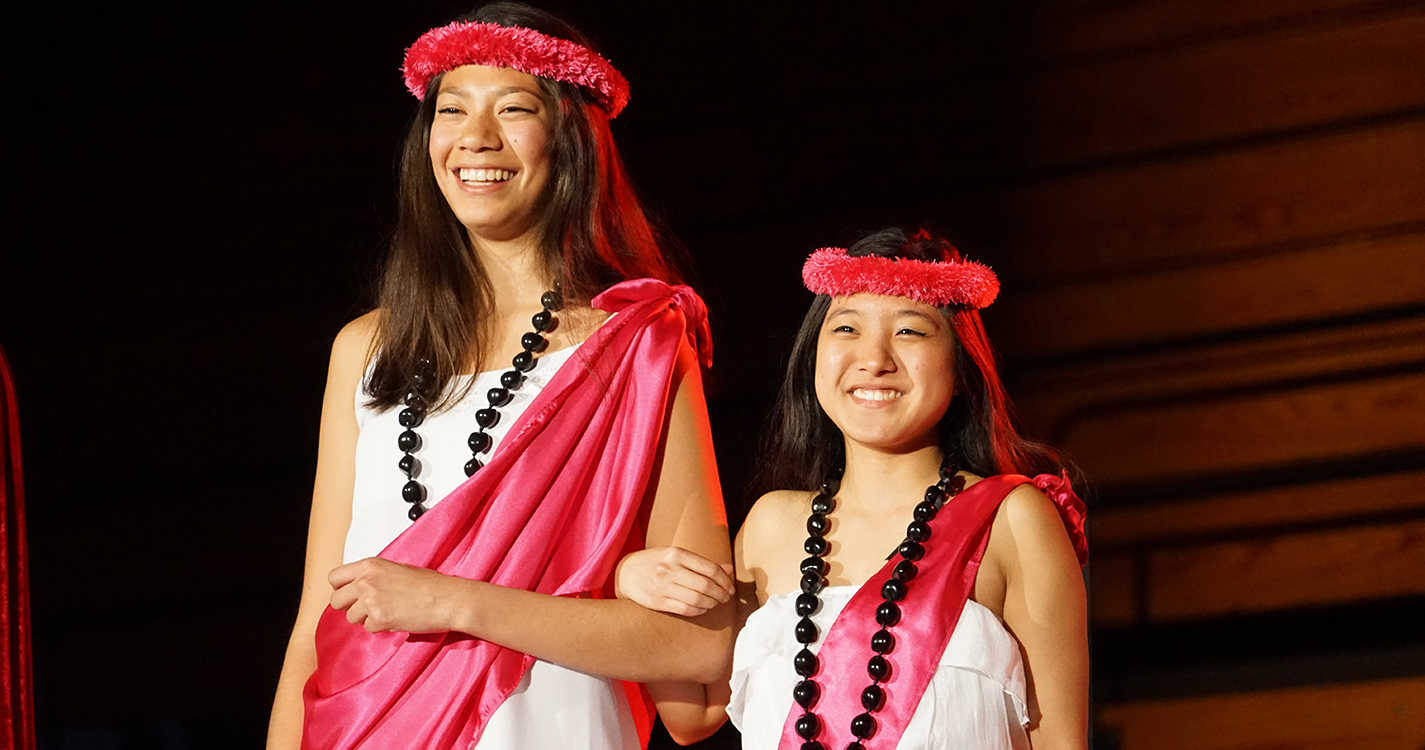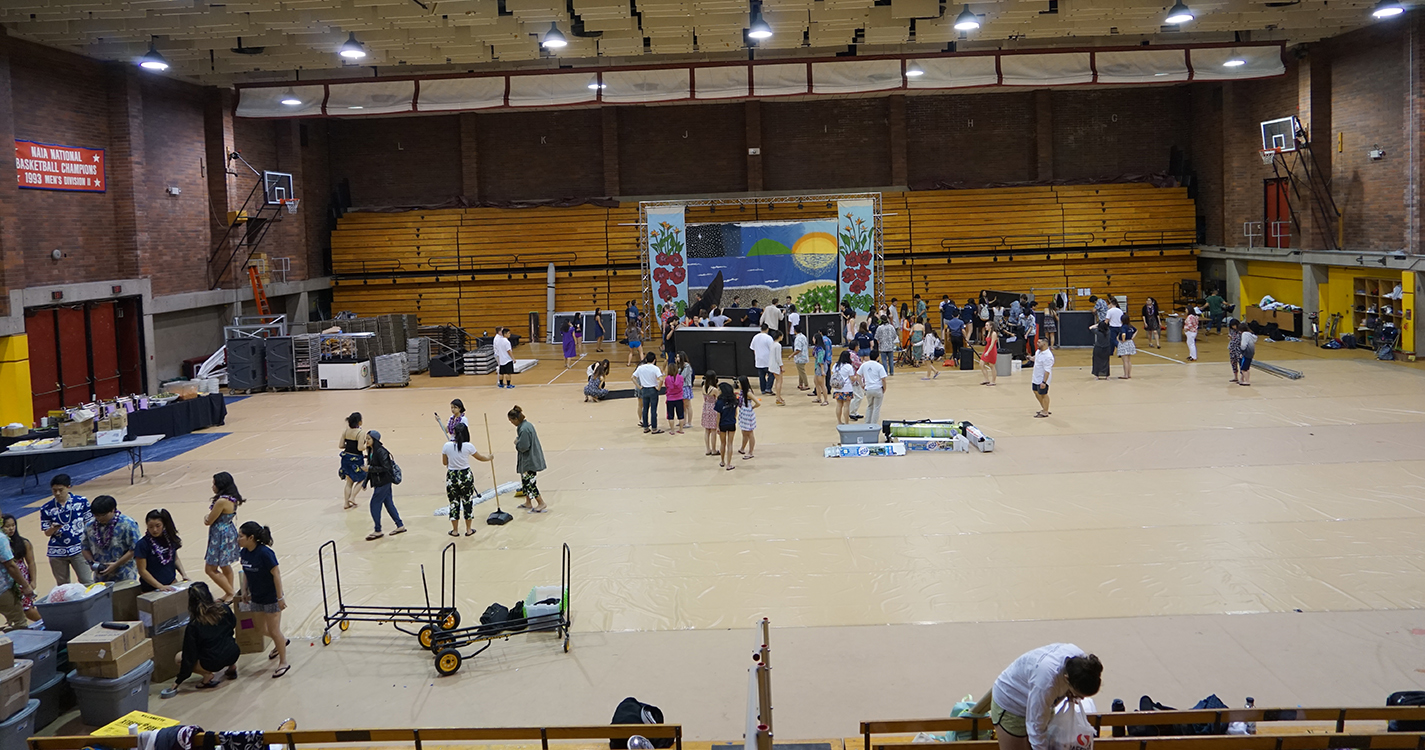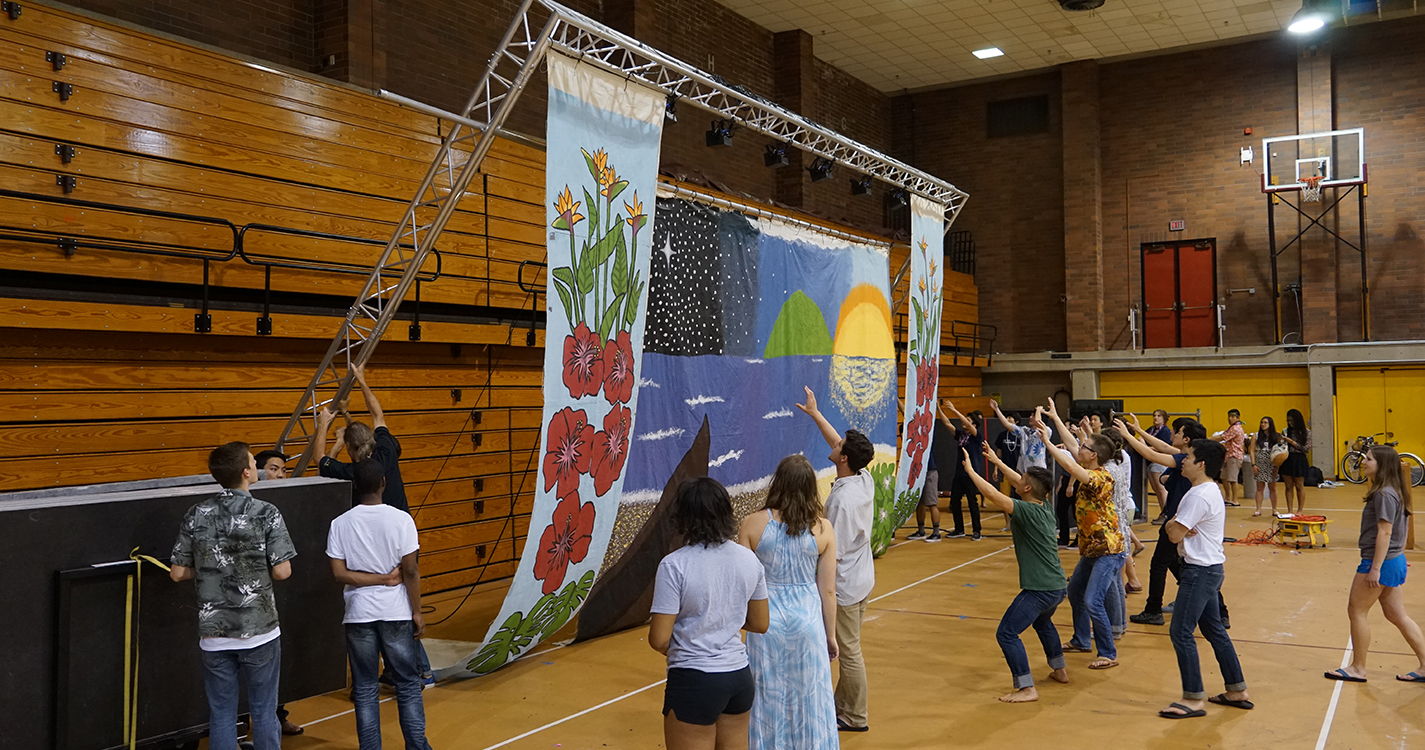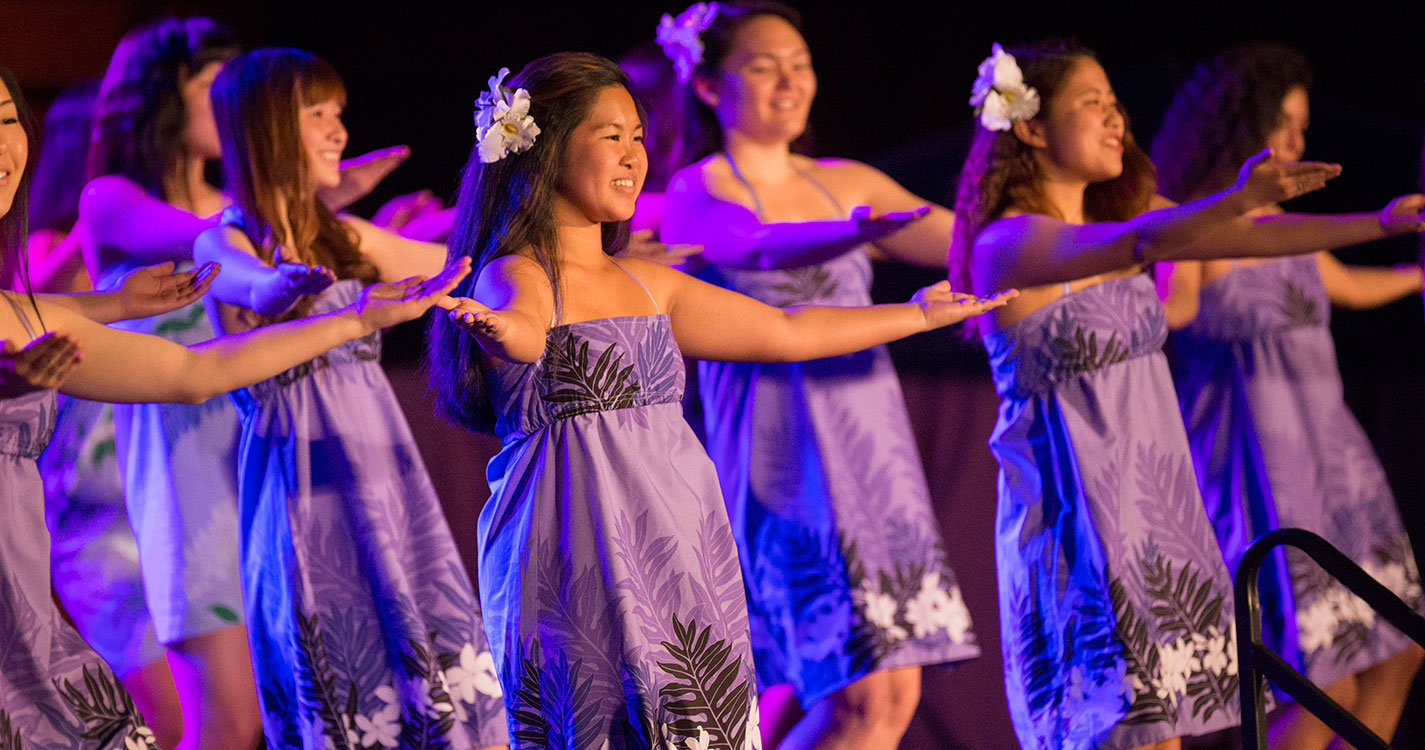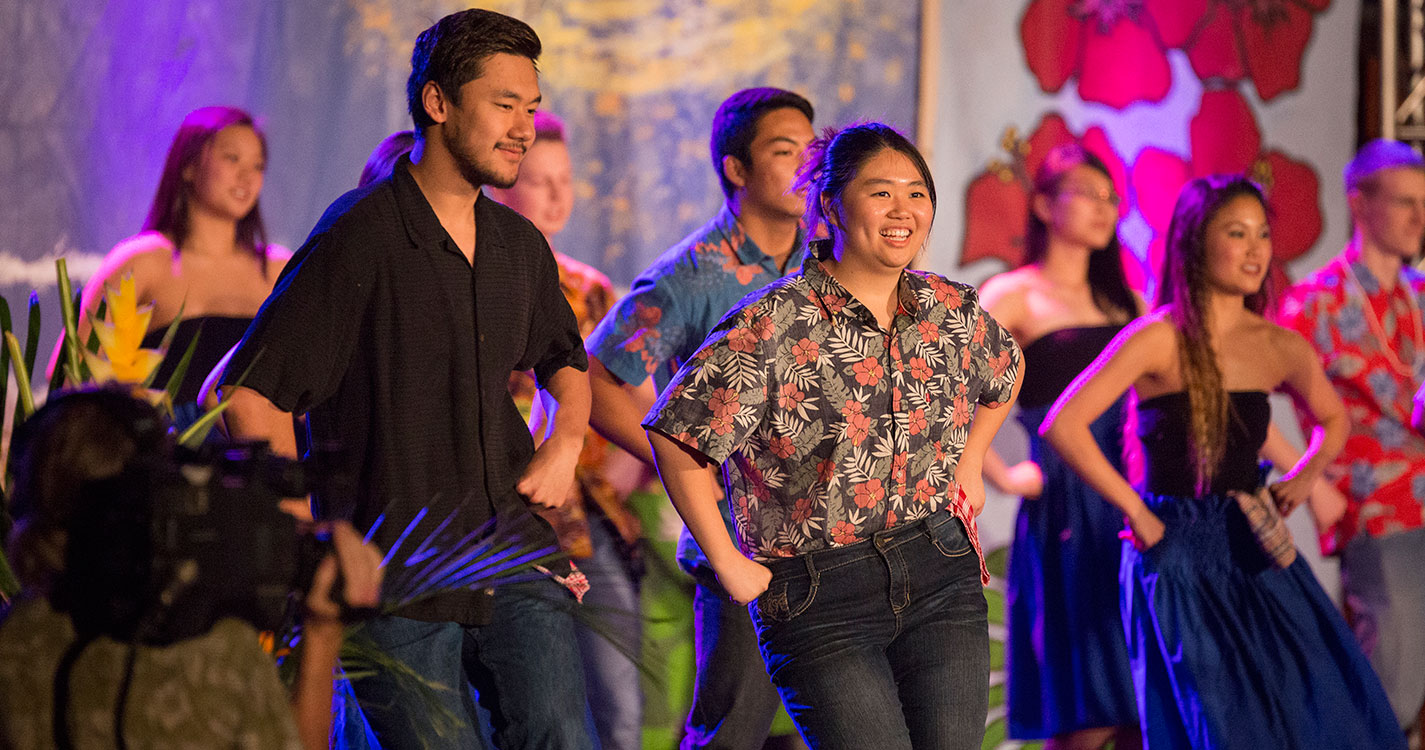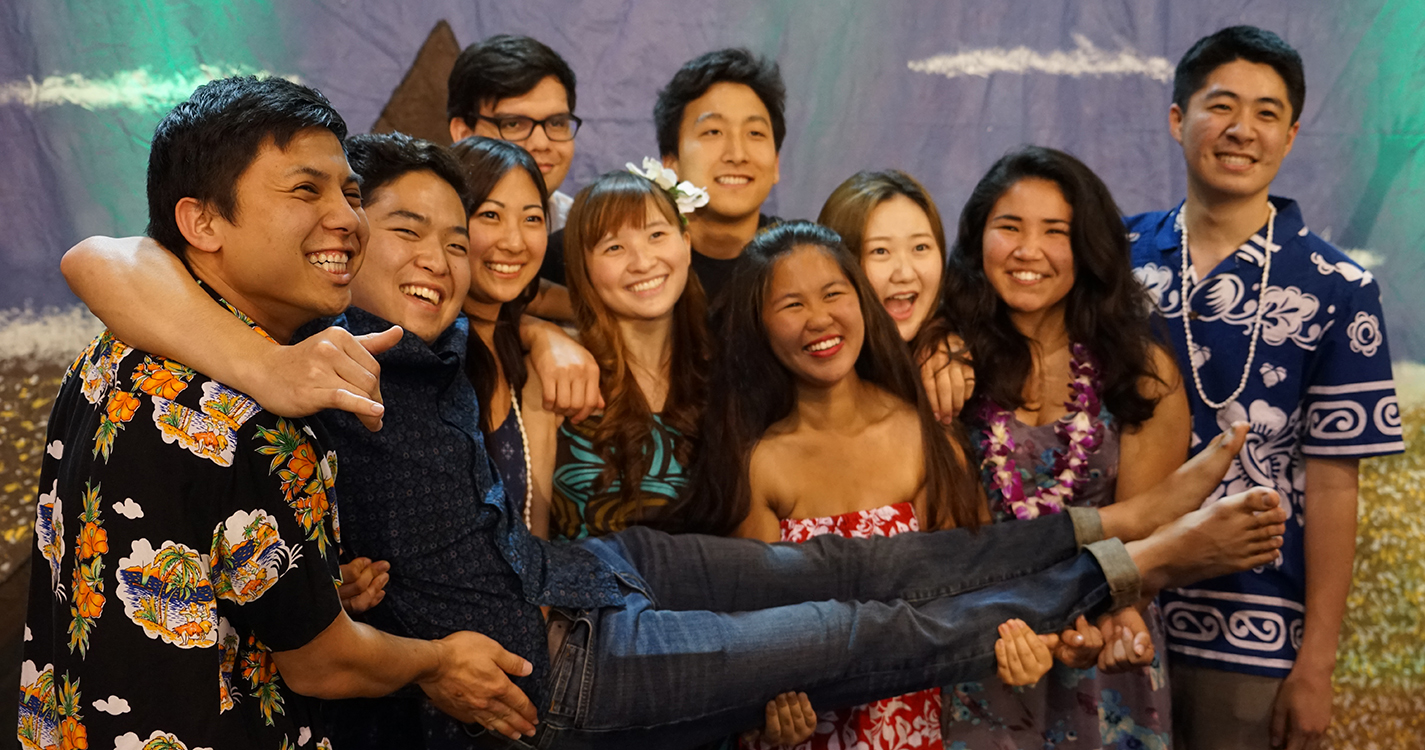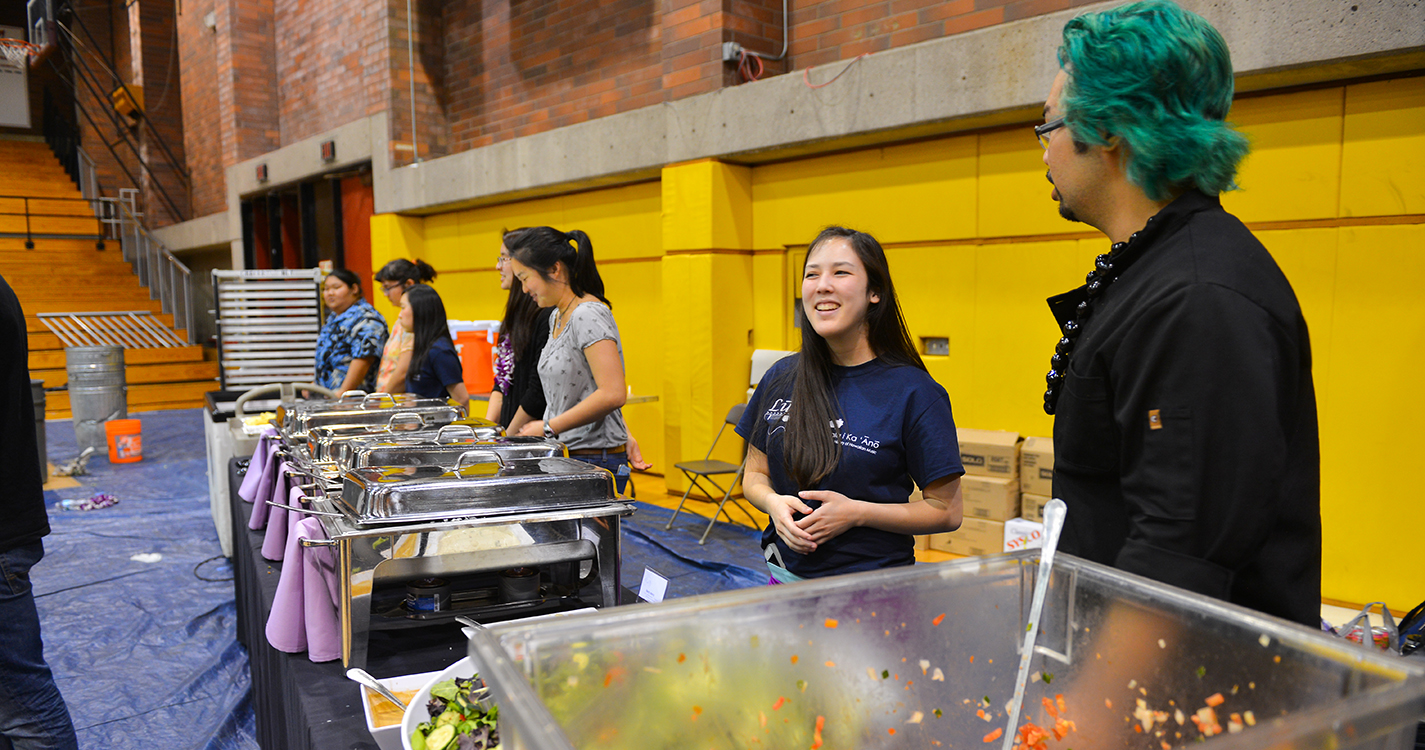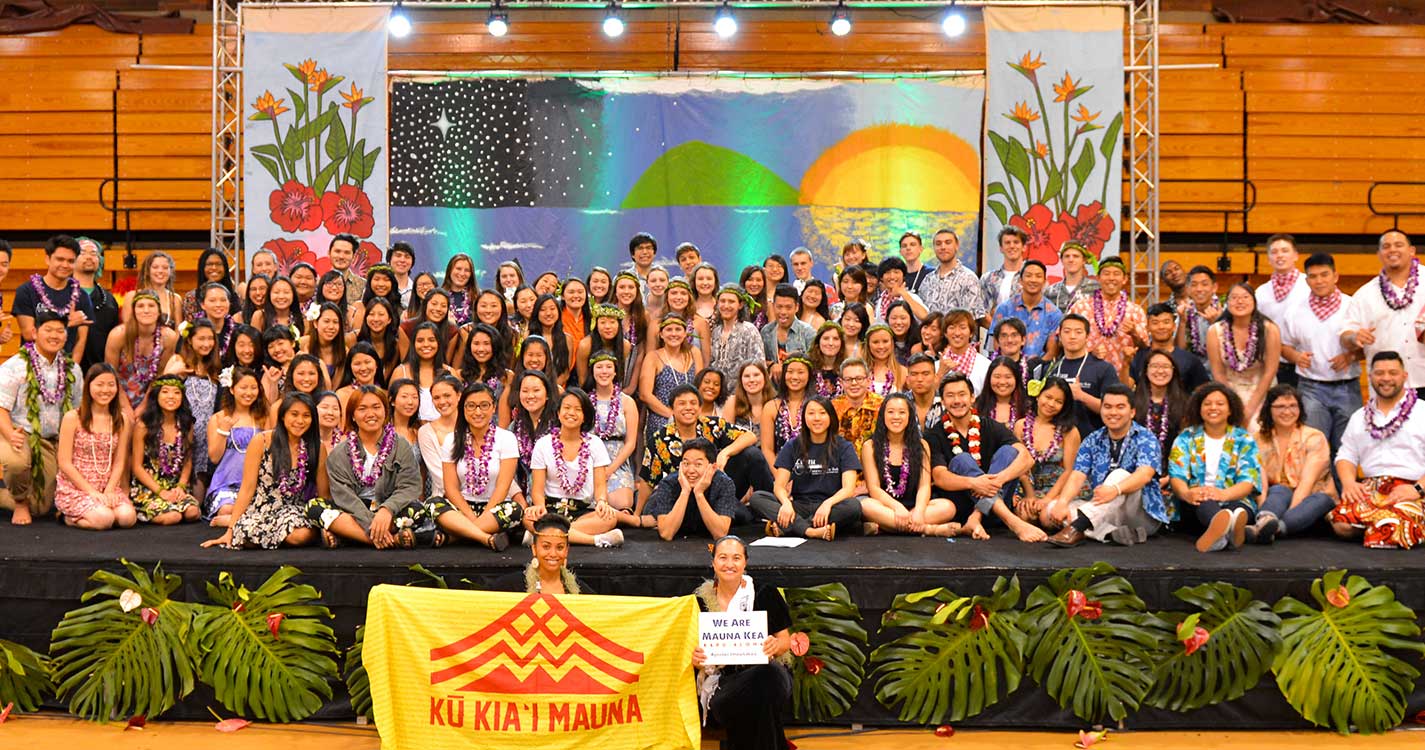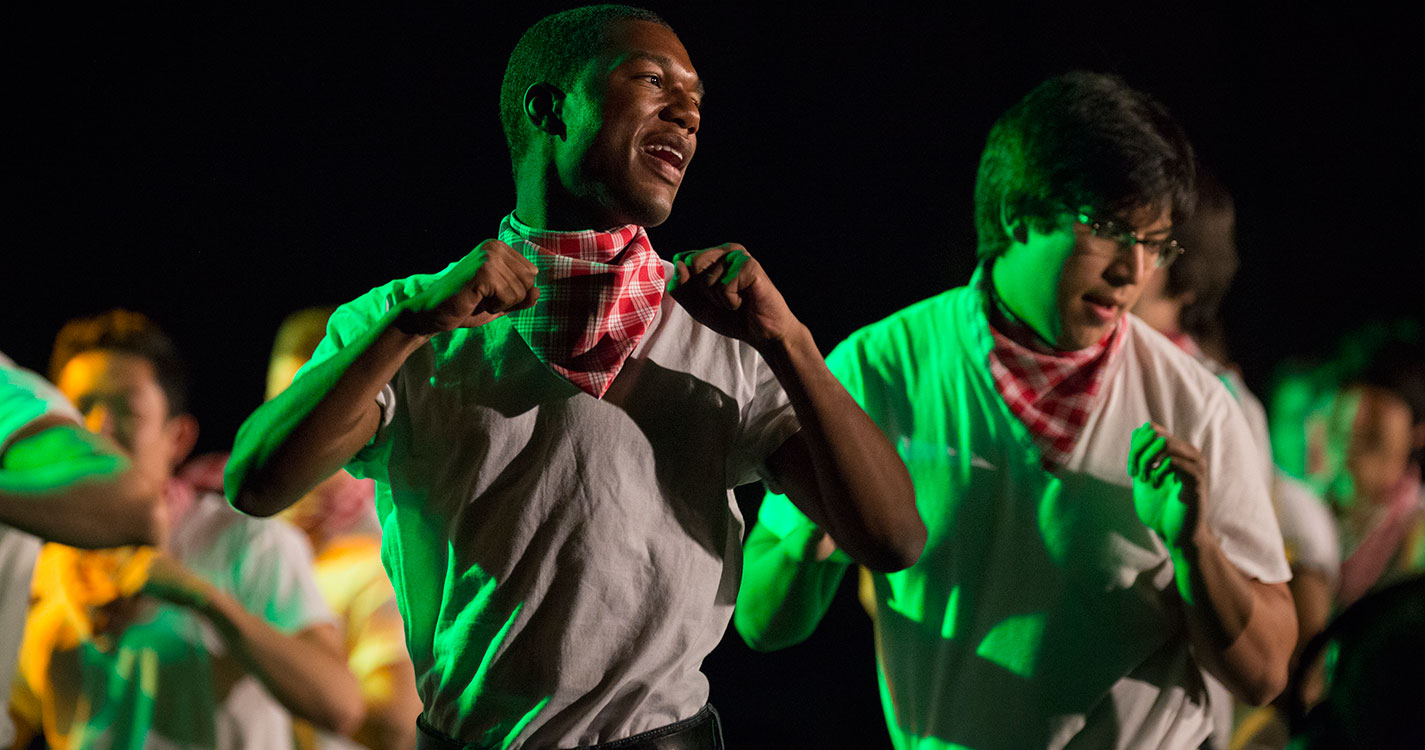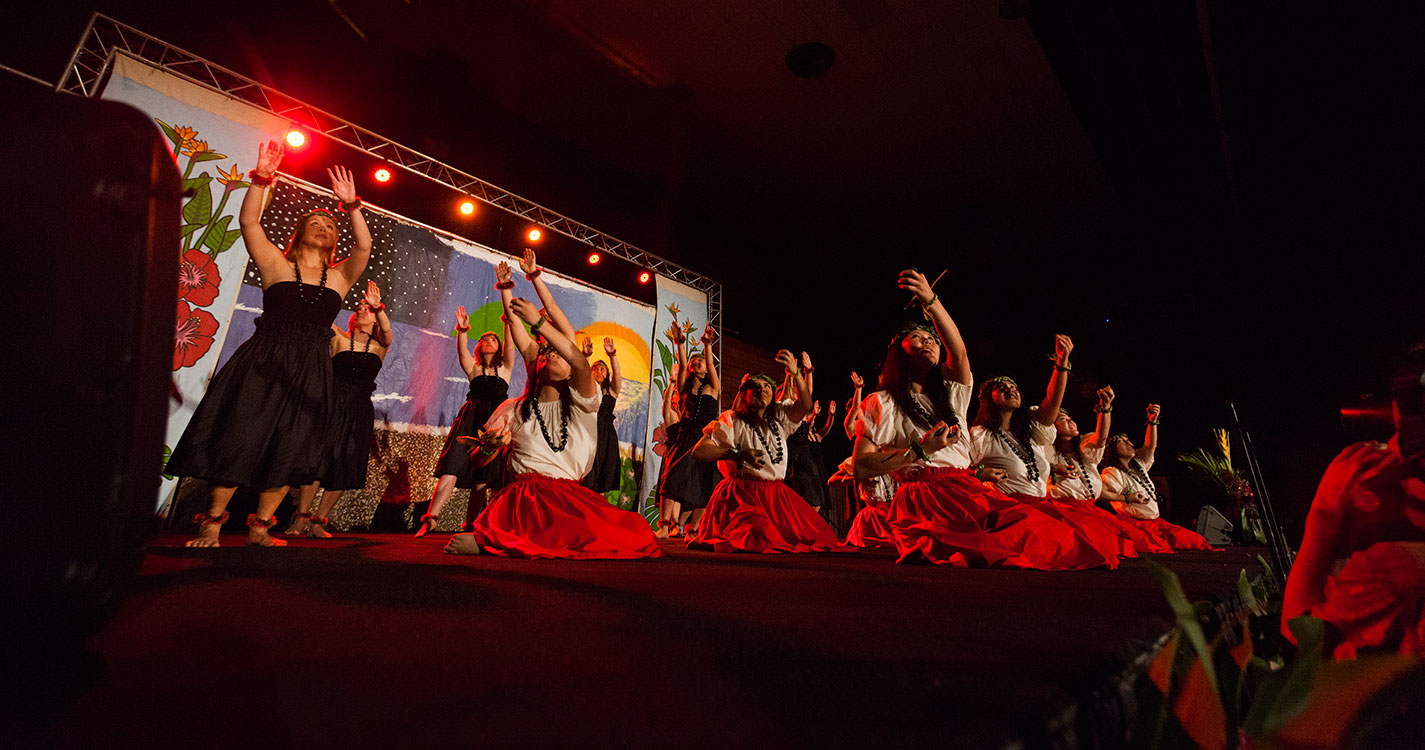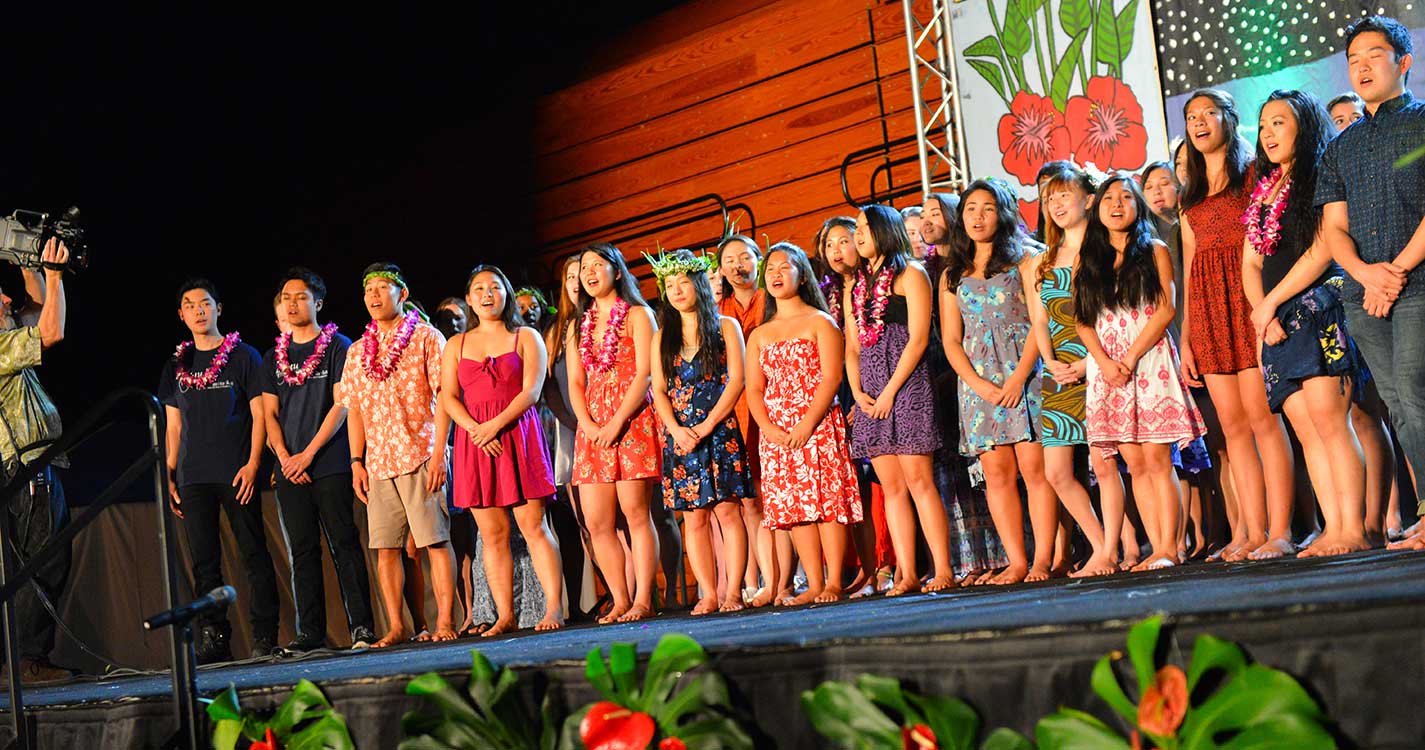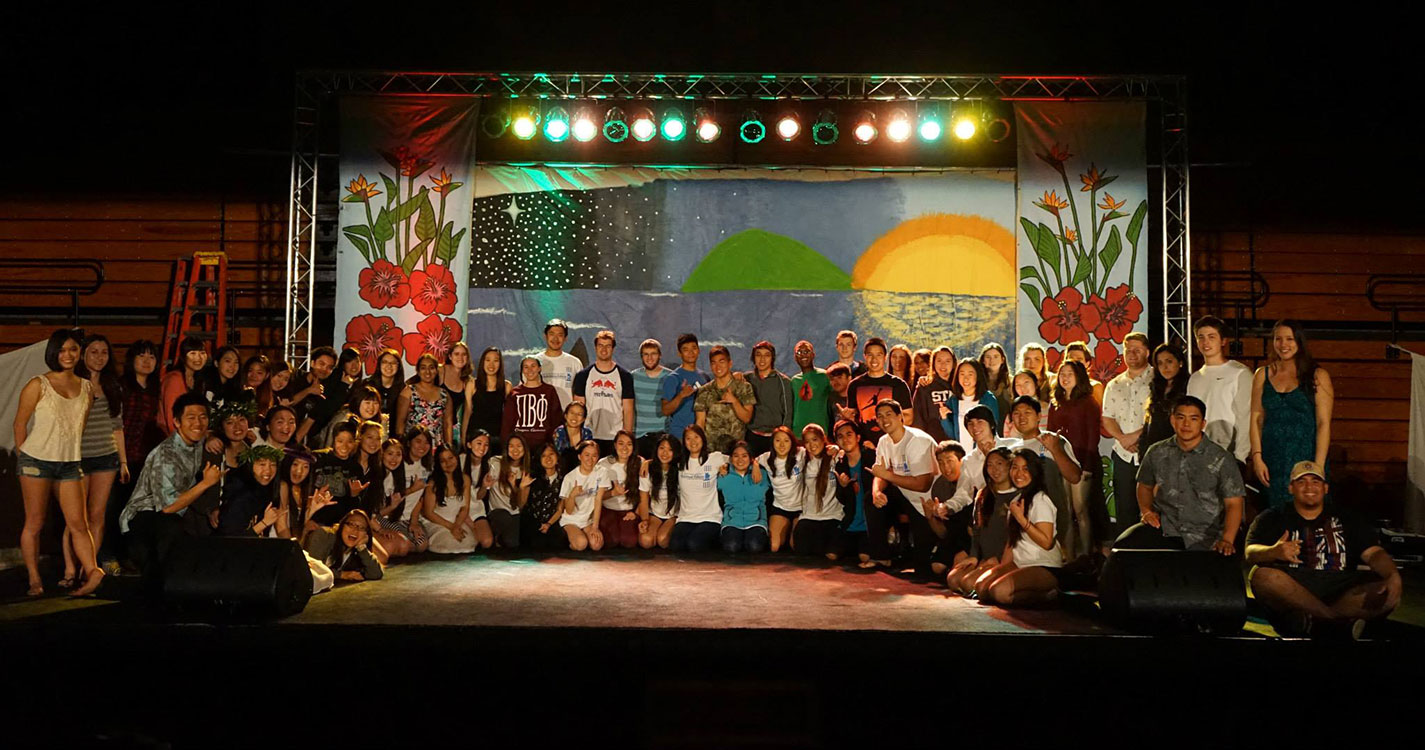Reminiscent of the darkened ocean and sky that welcomed brave Polynesians trekking across the Pacific, darkness filled the Cone Fieldhouse. The sound of the beating kilu drum and a gentle chant ushered in the first group of dancers and set the stage for what was to come.
Halemano, Kuʻu Wahine, the title of the first song, tells the story of Halemano, an ancient Hawaiian chief and his love for a woman named Kamalalawalu. The song’s lyrics and accompanying hula describe the couple’s travels together across the islands, taking in beautiful and sacred surroundings.
In a similar manner, Willamette’s Hawai’i Club took guests on a cultural journey during the 27th Lū’au, sharing the uniqueness and inclusivity of the islands through music, dance, stories and food.
The theme of this year’s Lū’au, "Mai Ka Hala i Ka ʻĀnō" (“From Past to Present”), developed through the diverse array of songs and dances selected – with traditional (hula kahiko) and modern (hula ‘auana) styles. The variety demonstrated how Hawai’ian music (or mele) has gone through a world of change by blending traditions and cultures. Even the food served at this year’s event – staples like kalua pork and lomi lomi salmon, and modern selections like vegetable yakisoba and steamed white rice – represented culinary influences from across the Pacific Rim.
Two special guests, Pualani Case and Hawane Rios, traveled to Willamette from Hawai’i’s Big Island to be a part of this year’s program. Case and Rios used song and chant to further illustrate the enduring and varied styles of Hawaii’s musical traditions, often accompanied by Rios’ impassioned skills on the ‘ukulele.
As the program evolved from ancient styles to traditional melodies, dances represented not just Hawai’i, but Tahiti, Samoa and Aotearoa (New Zealand), as well. Tolo Tuitele, a regular part of Lū’au, performed a dramatic fire knife dance based on the Samoan alilao tradition.
Students from Hawai’i, along with other members of the Willamette community, work nearly the entire academic year to put the Lū’au together. Over ten different committees are responsible for various aspects of the event and this year there were about 50 volunteers and about 75 committee members. Donations from Hawai’i, mostly from students’ families and friends, provide the floral decorations, food, clothing, Country Store gifts and many other elements of Lū’au.
Students also teach each other the dances during months of rehearsal – and many even craft their own outfits to represent the style and tradition of the songs.
Most of all, students hope to authentically represent their homeland and culture – extending aloha by informing, entertaining and telling a story in just a couple hours.

